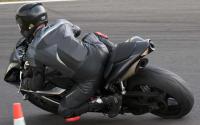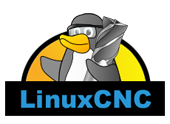Search Results (Searched for: raspberry)
- gundamgear
- gundamgear
16 Aug 2025 13:51 - 16 Aug 2025 14:02
- hitchhiker
- hitchhiker
13 Aug 2025 15:35
Replied by hitchhiker on topic ECMO VMC100 Retrofit with Carousel/Toolchanger
ECMO VMC100 Retrofit with Carousel/Toolchanger
Category: Milling Machines
- KaveMan
- KaveMan
13 Aug 2025 13:37
Replied by KaveMan on topic Raspbery pi5 pcie adapter to parport card
Raspbery pi5 pcie adapter to parport card
Category: General LinuxCNC Questions
- unknown
- unknown
13 Aug 2025 10:07
Replied by unknown on topic Raspbery pi5 pcie adapter to parport card
Raspbery pi5 pcie adapter to parport card
Category: General LinuxCNC Questions
- KaveMan
- KaveMan
13 Aug 2025 02:07
Replied by KaveMan on topic Raspbery pi5 pcie adapter to parport card
Raspbery pi5 pcie adapter to parport card
Category: General LinuxCNC Questions
- KaveMan
- KaveMan
12 Aug 2025 23:00
Raspbery pi5 pcie adapter to parport card was created by KaveMan
Raspbery pi5 pcie adapter to parport card
Category: General LinuxCNC Questions
- andypugh

10 Aug 2025 15:53
Replied by andypugh on topic New member from Germany - CNC retrofit of a Leinen FM1
New member from Germany - CNC retrofit of a Leinen FM1
Category: General LinuxCNC Questions
- PCW

07 Aug 2025 23:36 - 07 Aug 2025 23:52
Replied by PCW on topic Custom M codes don't work on Rasberry Pi 5 + Messa 7i95
Custom M codes don't work on Rasberry Pi 5 + Messa 7i95
Category: G&M Codes
- Pashtet
- Pashtet
07 Aug 2025 17:49 - 07 Aug 2025 17:50
Replied by Pashtet on topic Custom M codes don't work on Rasberry Pi 5 + Messa 7i95
Custom M codes don't work on Rasberry Pi 5 + Messa 7i95
Category: G&M Codes
- Pashtet
- Pashtet
07 Aug 2025 15:06
Replied by Pashtet on topic Custom M codes don't work on Rasberry Pi 5 + Messa 7i95
Custom M codes don't work on Rasberry Pi 5 + Messa 7i95
Category: G&M Codes
- Pashtet
- Pashtet
07 Aug 2025 09:39 - 07 Aug 2025 10:38
Custom M codes don't work on Rasberry Pi 5 + Messa 7i95 was created by Pashtet
Custom M codes don't work on Rasberry Pi 5 + Messa 7i95
Category: G&M Codes
- warwickben
- warwickben
01 Aug 2025 21:38
Mini pc recommendations? was created by warwickben
Mini pc recommendations?
Category: Computers and Hardware
- sk_linuxcnc
- sk_linuxcnc
29 Jul 2025 08:32
Replied by sk_linuxcnc on topic Help : Layman configuration for Raspberry Pi 5, Linuxcnc 2.9. and Mesa 7i96
Help : Layman configuration for Raspberry Pi 5, Linuxcnc 2.9. and Mesa 7i96
Category: General LinuxCNC Questions
- unknown
- unknown
28 Jul 2025 22:59
- sk_linuxcnc
- sk_linuxcnc
28 Jul 2025 16:06
Replied by sk_linuxcnc on topic Help : Layman configuration for Raspberry Pi 5, Linuxcnc 2.9. and Mesa 7i96
Help : Layman configuration for Raspberry Pi 5, Linuxcnc 2.9. and Mesa 7i96
Category: General LinuxCNC Questions
Time to create page: 0.455 seconds
